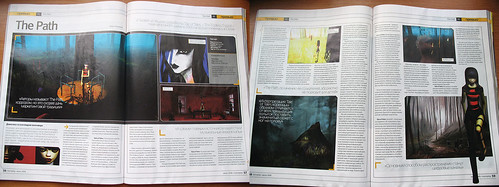We tend to watch video game trailers and the like during tea time lately. I know it’s kind of pathetic to work on games all day and to look at other people’s work on games for leisure. But anyway. One thing struck me when we were watching bits of the Fable 2 Dev Diary on Eurogamer TV. Something Joss Moore, Senior Combat Programmer (they all seem to have funny titles like that at Lionhead), said about the “One Button Combat” in their game.
For Fable 1, we had loads of different ideas about how we wanted to move forward with the combat. And we always would come up with a new thing and there’d always be the standard problem of how we work this into the controls. It was so limiting thinking “Well, we’ve run out of buttons for that. How will the player actually make this happen?” By stripping back to just using one button it seems the sky is the limit all of a sudden. Anything we can think of based on the context that it’s appropriate, we can do. Just with a single button press.
Sounded very similar to our own rejection of even the “single button press” for The Path.
I believe that this is more than a matter of restrictions stimulating creativity, though. Oddly, video game designers often seem to forget that they are working with computers and that computers can do a lot of things for you. Games often seem to be programmed as complete systems in which the player is asked to perform a function. So, in essense, when playing, we are working for the game, helping it to become complete.
But weren’t computers invented to work for us? Let the computer do the hard work! Even in games. Not only does that free us up to enjoy the art and the story better. This way, the computer can also become an active and creative element in the experience. The computer can become your ally, your friend, while together you explore this strange new virtual world.



